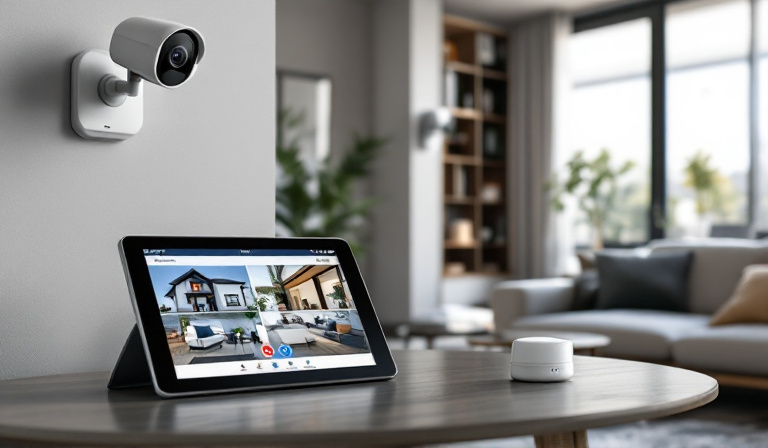
The rise of smart technology has transformed the way we live, offering conveniences that were the realm of science fiction just a few decades ago. Among the most significant areas where smart tech has made a substantial impact is home security. While smart doorbells have become popular for their ability to monitor entrances, there's a whole world of smart tech and sensors that can enhance your home's safety beyond the front door.
Understanding Smart Home Technology
Smart home technology refers to devices that connect to a network and can be controlled remotely via a smartphone, tablet, or voice command. These devices often feature built-in sensors and artificial intelligence, allowing them to respond to changes in their environment. In the realm of security, these technologies can detect motion, changes in temperature, and even sound.
Smart Sensors: The Heart of Home Security
Smart sensors are integral to a modern home security system. They can detect intrusions, alert homeowners to potential hazards, and even prevent damage from environmental factors. Here's how they work and what you should consider when integrating them into your home security setup:
1. Motion Sensors
Motion sensors are perhaps the most well-known type of smart sensor. They detect movement in a specified area and can trigger alarms, lights, or cameras to start recording. Advanced models can differentiate between pets and humans, reducing false alarms.
2. Door and Window Sensors
These sensors are designed to alert you when a door or window is opened unexpectedly. They are perfect for monitoring entry points and can be integrated with other smart devices to lock doors or sound an alarm if unauthorized entry is detected.
3. Glass Break Sensors
These sensors are specifically designed to detect the sound or vibration of breaking glass. They add an extra layer of protection by alerting you to attempted break-ins through windows.
4. Environmental Sensors
Smart environmental sensors monitor conditions like smoke, carbon monoxide, humidity, and temperature. They can alert you to fire hazards, gas leaks, or even potential flooding, allowing you to take action before damage occurs.
Integrating Smart Cameras
Beyond sensors, smart cameras provide an additional layer of security. They offer real-time monitoring and can be accessed remotely via mobile devices. Here are some features to look for:
- High Definition Video: Ensure your cameras offer at least 1080p resolution for clear images.
- Night Vision: This is crucial for monitoring your home after dark.
- Two-Way Audio: Allows you to communicate with visitors or intruders from a safe distance.
- Wide-Angle Lens: Provides broader coverage with fewer cameras.
The Role of Artificial Intelligence
Artificial intelligence (AI) enhances smart home security systems by enabling them to learn and adapt to your lifestyle. For example, AI can analyze patterns in your daily routine to distinguish between normal and suspicious activity. Some systems can even recognize faces and alert you when an unfamiliar person is detected.
Practical Tips for Enhancing Home Security
Implementing smart technology is a significant step towards a safer home, but there are additional measures you can take:
- Regular Updates: Keep your devices and software updated to protect against security vulnerabilities.
- Strong Passwords: Use complex passwords and change them regularly to safeguard your network.
- Secure Network: Ensure your Wi-Fi network is secure and consider using a separate network for your smart devices.
- Professional Monitoring: Consider a professional monitoring service that can respond to alerts and contact emergency services if necessary.
Conclusion
Smart technology and sensors have revolutionized home security, providing homeowners with more control and peace of mind than ever before. Whether you're at home or away, these systems offer a comprehensive approach to safeguarding your property and loved ones. By integrating smart sensors, cameras, and AI, you can create a robust security system that not only protects but also adapts to the ever-changing dynamics of your home. With the right setup and precautions, you can ensure your home is not only smart but also safe.

